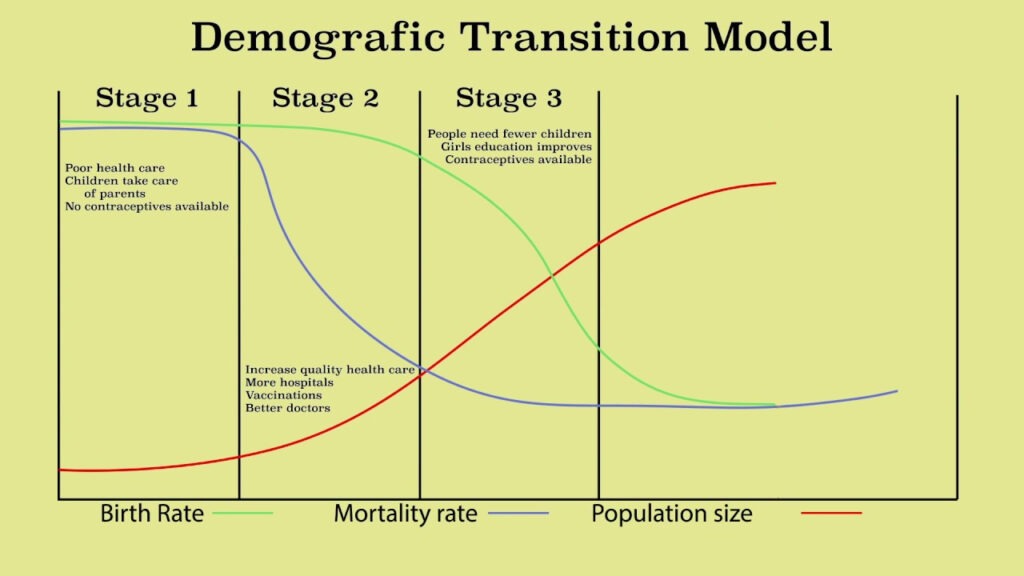The Demographic Transition Theory is a model that describes the historical relationship between population growth and economic development. The theory suggests that as countries move from pre-industrial to industrialized economies, there are predictable changes in birth and death rates, resulting in three distinct stages. Here is a neat and labeled diagram that explains the three stages of the Demographic Transition Theory:

Stage 1: Pre-Industrial
- In this stage, both birth and death rates are high, and population growth is low.
- High birth rates are due to a lack of family planning, cultural and religious norms, and the need for children to help with agricultural labor.
- High death rates are due to disease, famine, poor sanitation, and lack of medical technology.
- Overall, the population remains stable, as high birth rates offset high death rates.
Stage 2: Industrializing
- In this stage, death rates begin to decline due to improvements in public health, sanitation, and medical technology.
- Birth rates remain high, resulting in a rapid increase in population growth.
- This stage typically coincides with industrialization, urbanization, and economic growth.
- With better healthcare and lower mortality rates, families begin to have fewer children due to increased access to family planning and changing societal norms.
Stage 3: Post-Industrial
- In this stage, birth rates also begin to decline, typically due to increased access to family planning, women’s education, and changing societal norms.
- Death rates continue to remain low, and population growth slows down, eventually stabilizing at a lower level.
- This stage is typically associated with high levels of economic development, urbanization, and the shift towards service-based economies.
It is important to note that the Demographic Transition Theory is a general model and that the timing and pace of each stage can vary between countries, depending on their unique historical, cultural, and economic factors.